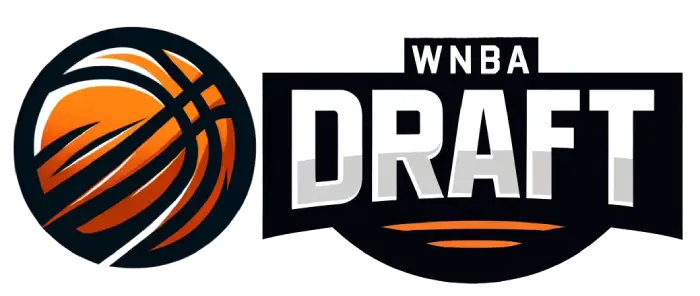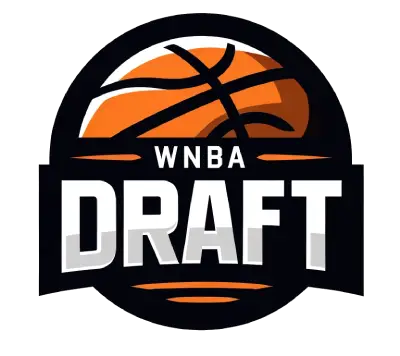As I mentioned after the 2012 WNBA Draft, a large part of what I did to evaluate draft prospects in NCAA Division I basketball last year was sorting through statistics from a couple hundred draft-eligible players over the last five years and evaluating prospects based upon how similar prospects have performed in the past.
While I offered a few examples of that after the 2012 draft, I’ve had some time to take that a bit further in advance of the 2013 WNBA Draft, which is a large part of the reason why we have yet to post a list of top prospects despite having a pool of about 25 from which the 2013 first round picks will probably come from. As you can imagine, throwing up a list of 25 in a draft with 12-pick rounds is somewhat silly but this is a deep draft in which, on the surface, there will be a number of names bandied about as “talented prospects”.
And while a deep draft sounds great for teams that are picking outside of the lottery, from an analytical standpoint a potentially “deep” actually presents a challenge: inevitably, a good number of prospects that people are touting as first round will not succeed as WNBA players, either because their skill set didn’t support a smooth transition to the pros or their pro talent was a college illusion.
The question is how we separate the top prospects from the rest.
What makes a “successful” prospect?
In short, my approach this year has been to divide draft prospects into five categories based on statistical indicators of past prospects in the past five years: elite, strong, uncertain, risky, high risk. Those first three categories could also be framed in the following way, which I’m defining as “success” for the sake of this exercise: starter, rotation-level, roster worthy. Obviously then you can have varying levels of “success”, but the easiest dividing line has been roster-worthy and non-roster worthy.
While this set of risk and success factors can help us create an approximate hierarchy of NCAA Division I prospects, it’s also worth acknowledging a limitation particularly at the lower mid- to lower end of that “scale”: saying a player is “roster worthy” based on rookie year “success” is quite clearly based more upon past tendencies of coaches and/or general managers than actual WNBA success. So it’s possible that a type of player that typically has a short career makes rosters quite frequently because they do something in college or show enough “upside” in training camp to make the roster. Or maybe they’re just a rare type of player that general managers tend to seek out due to scarcity that leads to a consistent team need. In other words, any time you use the past to project future success you open the door to moving away from a discussion of talent and toward a discussion about the tendencies of general managers. But that’s why the player similarity ratings are valuable and we’ll get to those later.
For today, we’re just going to run through major indicators for success, including examples of players beyond the obvious Big Three who met those criteria based on their junior season statistics. Bear in mind that having a strength does not guarantee success – sometimes players have a fatal weakness that ends up negating a strength. But consider this a starting point for narrowing the long list of seniors down to around 25 prospects before filtering things further with a look at weaknesses that hurt chances of success.
Offensive rebounding
One thing that has made a prospect almost a lock for making a roster in the last five years is dominant rebounding in college, especially for strong offensive rebounders. The reason for that might be obvious: offensive rebounding is a skill that reflects some level of athleticism, basketball intelligence, and strong instincts. Unlike some other statistics, it’s just hard to “inflate” offensive rebounding percentages – it tends to be something that you’re either good at or not and the best NCAA Division I offensive rebounders tend to do well at the next level.
But there’s an interesting addendum to that wisdom that really crosses WNBA, NBA, and D-League basketball: in the WNBA it’s not just having a strong offensive rebounding percentage but also being a pure interior player. More specifically, players in the 95thpercentile or above in their interior tendencies with strong offensive rebounding percentages tend to be successful prospects.
Examples among 2012-13 seniors: Tianna Hawkins, Maryland; Kelsey Bone, Texas A&M; Chelsea Poppens, Iowa State; Toni Young, Oklahoma State; Destiny Williams, Baylor
Distributor efficiency
Among the easiest prospects to sort out are point guards because there’s quite a bit of uniformity in the threshold between roster-worthy and non-roster worthy point guards. There are essentially three criteria for success for point guards:
- College assist ratios of 23% or above.
- College pure point ratios of 2.5 or above, unless they have take on a high scoring load (usage rates of 23% or above, which is typically high for point guards). Most recent example of this: Samantha Prahalis and Danielle Robinson.
- If a player does not have both of the above, they better be efficient scorers and an Chaiken efficiency ratio (points per empty possession) of 1.8 or above seems to be a good indicator. Players with the numbers above can make a roster with as low as a 1.6 Chaiken efficiency ratio.
Bear in mind what this means though: a player who doesn’t fit that profile can end up on a roster even if they don’t make it as a point guard. But the above criteria pretty much separates “WNBA point guard” from “good college point guard”.
Examples of efficient distributors among 2012-13 seniors: Haley Steed, BYU; Taelor Karr, Gonzaga; Angel Goodrich, Kansas; Jenny Ryan, Michigan
Scoring point guards
I had been calling this an exception to my framework for point guard prospects, but now it stands out as something that deserves its own category.
For players that were their team’s lead ball handler, having a high usage rate, above average assist ratio, and even moderate efficiency is a strong indicator for success. The reason for that is pretty simple: most point guards get to the WNBA and find their usage rates dropping because they’re no longer asked to be their team’s primary scorer. The result is that their efficiency numbers tend to improve in the pros, as both distributors and scorers. So it ends up leaving us with a rule that might sound like a paradox to some: being an inefficient distributor at point guard at the college level is not a problem if you’ve proven that you can score because you’ll get more efficient in the pros.
The most recent quintessential example of this is Danielle Robinson: she went from having a high usage rate and low pure point rating at Oklahoma – where she was the primary ball hander and scoring option – to having among the highest pure point ratings in the WNBA and a relatively low usage rate with the San Antonio Silver Stars.
Examples among 2012-13 seniors: Lindsey Moore, Nebraska; Davellyn Whyte, Arizona
Efficient scorers
Minnesota Lynx assistant coach Jim Peterson summed this one pretty simply on a Minnesota Timberwolves preseason broadcast: borrowing from former T’Wolves GM Kevin McHale, he noted that there’s a difference between shot takers and shot makers and a GM should be looking for the latter.
Every year in the WNBA (and NBA) draft some team uses a high pick on a shot taker with a high scoring average while shot makers fall down the draft board. Not only should shot makers be the target for teams looking for scoring, but the ability to choose between a good and bad shot often indicates that a player is a) either to score in a variety of ways or b) do other things on the court to help their team score.
Scoring efficiency can make or break players at almost any position, but it’s especially relevant for wings (players expected to play shooting guard or small forward in the pros). A brief break down is as follows:
- Point guards: points per empty possession of 1.8 or above
- Wings: 2-point percentage above 47%
- College power forwards: 2-point percentage of 52% and above
- College centers: true shooting percentage of 60% and above
The trickiest ones there are the power forwards and wings – there are so many different ways that the position functions at the college level and how those players score (especially on the wing where players tend to drive, shoot jumpers, and shoot threes from various places on the court) that it’s hard to find a true “make or break” scoring rule.
Examples among 2012-13 seniors: Tayler Hill, Ohio State; Anna Martin, DePaul; Kelly Faris, UConn; Carolyn Davis, Kansas; Monique Oliver, Rutgers; Morgan Stroman, Miami;Jasmine Dixon, UCLA; Adrian Ritchie, Green Bay
Steal percentage
As John Hollinger suggests for NBA prospects, the ability to steal the ball at a high rate is not necessarily an indicator that a player is a standout defender but is often the mark a superior athlete. Assuming a player doesn’t have any major red flags (see below) a wing with a steal percentage over 4% is typically in good shape to become a “successful” prospect.
Examples among 2012-13 seniors: Kevi Luper, Oral Roberts; A’dia Mathies, Kentucky; Markel Walker, UCLA; Chucky Jeffery, Colorado
So who are the top prospects?
Obviously, by listing examples of who fits the various sets of strengths and weaknesses, I’ve tipped my hand a bit at who we’ve selected as our top prospects to watch this season. And clearly, there are some highly touted prospects that have not been mentioned here.
But there are two things to keep in mind: first, these are junior year statistics and they could change, for better and worse. Last year, a number of draft prospects with promising junior seasons declined in their senior years and a few with question marks in their junior year improved in their senior year (and Stanford’s Nneka Ogwumike went from a great prospect to a historically elite one statistically). So by no means is this set in stone and this class could end up getting deeper by season’s end.
Second, as alluded to above, there are also certain weaknesses that can limit success to the point of partially or entirely negating statistical strengths. We’ll narrow the list down further with a look at those weaknesses, but for now who are your top prospects? And to the question in the poll below, how strong do you consider the 2013 WNBA Draft class?
Source: Swish Appeal


